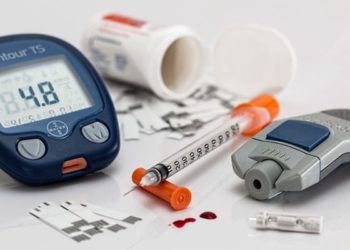Exercising decreases insulin resistance in sedentary overweight and obese children [JAMA]
Image: CC
Key study points:
- Obese or sedentary children that perform aerobic exercise (20 or 40min/day) have a reduced risk of developing pre-diabetes insulin resistance, regardless of sex or race.
- Increased exercise (dose-response) was also associated with reduced total body and visceral fat.
Primer: Childhood obesity is a growing epidemic and rates have more than tripled over the past 30 years. Exercise is known to reduce metabolic risks in obese and overweight kids. No studies have assessed the dose-response between exercise and avoidance of metabolic outcomes in a pediatric population. The authors of this study investigated the dose-response effect of an aerobic exercise program on insulin resistance (serum insulin area under the curve [insulin AUC]), total body and visceral fat (x-ray absorptiometry and MRI scans), and cardiovascular fitness (peak oxygen consumption [pVO2] in overweight and obese kids.
This [randomized control] study: The authors recruited 222 obese or overweight (body mass index [BMI] ≥85th percentile for age) or sedentary (<1 hour regular physical activity or exercise per week) school kids (ages 7-11) from Georgia (U.S.) to participate in the study for up to 15 weeks. They were randomized to a 1:1:1 to either their usual level of physical activity, 20 minutes (low dose) or 40 minutes (high dose) of aerobic activity every school day, with no dietary restrictions. A total of 209 children (9.4 ± 1.1 years old) completed. 28% of participants had pre-diabetes. After adjusting for age, sex, race, and Tanner growth scale, both the low-dose and high-dose exercise groups had significant (p<0.05) improvements in: Insulin AUC (-2.96 mU/mL low dose and -3.56 mU/mL high dose), body fat percentage (-0.84% in low dose and -1.42% in high dose), visceral fat volume (-2.77 cm3 in low dose and -3.86 cm3 in high dose), and pVO2 (2.37 mL/kg/min in low dose and 2.44 mL/kg/min in high dose). There were no statistically significant differences between the low dose and high dose exercise groups.
In Sum: The more exercise that overweight or obese children got, the less likely they were to develop pre-diabetic insulin resistance. Increased duration of exercise was associated with larger reductions in total body and in visceral fat. Although significant differences between the low-dose and high-dose groups were not found, there was a general pattern showing a “dose-response gradient.” Limitations of this study include: short duration, open-label design, and lack of follow-up after the study was completed.
Click to read the study in JAMA
Written by AM and MS
© 2012 2minutemedicine.com. All rights reserved. No works may be reproduced without written consent from 2minutemedicine.com. DISCALIMER: Posts are not medical advice and are not intended as such. Please see a healthcare professional if you seek medical advice.


